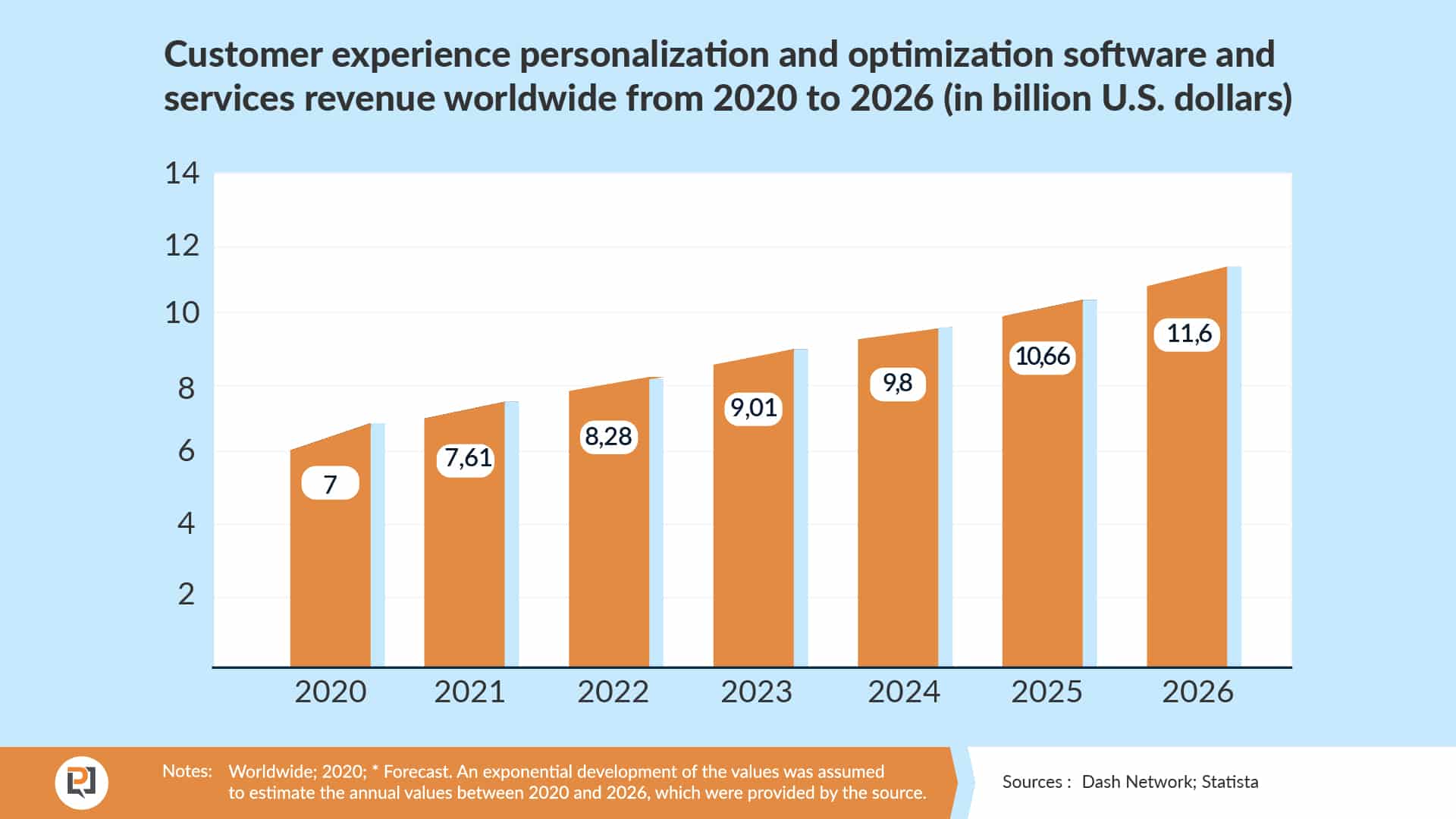Marketing plays a vital role in the success of an eCommerce business. If you’re looking to increase revenue, reassessing your marketing approach is a good place to start. With conversion rates for the industry hovering just under 3%, there’s plenty of room for improvement. And the eCommerce marketing best practices we’ll cover here will help.
In fact, these guidelines will be helpful in any B2C vertical, from higher education to real estate.
1. Set Clear Goals
One of the key elements of building a successful eCommerce marketing strategy is defining your goals and the KPIs against which you’ll measure them.
If you need some direction, the SMART goal framework is a tried-and-true approach to goal setting. According to the framework, your goals should be:
- Specific, so that it’s clear what needs to be done.
- Measurable, so it’s clear whether you’ve met your goal.
- Attainable, because hitting goals increases motivation.
- Relevant to the success of your company, so it helps you meet your objectives.
- Time-based, to create a sense of urgency and a deadline to reassess your approach.
For example, if you want to increase revenue so that you can increase your advertising budget, you might set a goal to decrease your cart abandonment rate by 10 percent by the end of Q4.
You could be even more specific and detail the steps you’ll take to meet the goal. You might:
- Identify and act on your shoppers’ reasons for cart abandonment with a survey
- Convert abandoned shoppers through an abandoned cart recovery campaign
- Convert abandoned shoppers through email retargeting
- Convert abandoned shoppers through digital advertising
- Get the emails of anonymous shoppers who abandon their carts with website visitor identification
2. Use Audience Segmentation to Better Understand Your Customers
The next eCommerce marketing best practice is to implement audience segmentation. That means dividing your email list and ad audiences into different groups so you can deliver highly relevant marketing campaigns to each group.
Even if you’re already segmenting your audience to some degree, we’ll cover how you can gather more data to segment your customers in more refined ways.
Customer segmentation allows you to:
- Better know and understand your customers
- Create more relevant marketing content for each customer
If you don’t have an idea of who your customers are, where they’re located, how old they are, whether they have children, what their level of education is, and so on, your marketing campaigns will be less effective.
Here’s an example of a worst-case scenario that many of us have experienced. A person researches gifts for a baby shower and finds themselves targeted with ads and emails promoting baby products even though they’re not a parent.
You can segment your data more effectively with website visitor identification. This software will collect your visitors’ geographic and demographic data, even if they don’t submit a form on your website.
Visitor identification can determine a shopper’s:
- Email address
- Mailing address
- Phone number
- Household income range
- Age range
- Education level
- Gender
- Net worth range
- Marital status
- Presence of children
This is a legal and compliant method of B2C lead generation that uses a data capture platform to match your visitors to records in different third-party databases and sends the data to your CRM. Then you can use this data to create personalized marketing campaigns (for example, personalized emails) based on what different customers need and expect.
In addition to providing affordable data enrichment, website visitor identification is a cost-effective email acquisition tactic.
3. Engage Your Customers With Personalized Marketing Campaigns
Customer engagement and personalization play an important role in the eCommerce industry.
Engaged customers will buy more from your store and are more likely to recommend it to their colleagues, friends, or family members. According to studies, fully engaged customers are 23 percent more profitable to businesses than the average customer.
And over forty percent of customers appreciate eCommerce personalization. In fact, they appreciate it so much that forty-four percent of them would consider switching brands if another company does it better. McKinsey research shows that personalization increases customer loyalty and revenue.
That’s probably why the personalization software industry is growing so rapidly.

Personalization leads to increased engagement so personalizing your marketing campaigns is one of the most essential eCommerce best practices. That means collecting the data and segmenting your audience to provide highly relevant content that answers shoppers’ questions, and meets them where they are, rather than where you expect them to be.
The best way to produce personalized content and distribute it to the right audiences is by collecting data on your customers, enriching that data, analyzing it, and tailoring your eCommerce marketing strategies to the different segments of your audience.
Personalization allows you to provide your customers with highly targeted:
- Content and resources
- Offers and discounts
- Recommended products
To do that, analyze the data and supplement it with insights from each shopper’s purchase history to extract trends and patterns. Then use demographic segmentation and other marketing segments to deliver relevant messaging, ads, emails, and offers to each group of customers.
4. Provide Value at Every Step of the Sales Funnel
Adopting an inbound marketing strategy helps cultivate a loyal, engaged audience and build brand equity. It will require the production original content that answers your customers’ questions at each stage of the buyer’s journey. You should have content and offers that speak to customers’ needs at the top, the middle, or the bottom of the sales funnel.
This approach will attract more visitors to your website with tailored marketing and advertising campaigns based on specific keywords. It will also increase conversions because you will develop brand awareness and credibility throughout the buying process.
Inbound marketing for eCommerce has its limitations, though: the majority of your website traffic will bounce and remain anonymous unless you’re using a tool to see who is visiting your website.
5. Optimize Your Website for Conversions & Sales
The final eCommerce marketing best practice is to make sure your website is super easy to navigate: visitors should be able to browse through your products easily, and the checkout process should be as intuitive and simple as possible: in the first quarter of 2021, the cart abandonment rate for US online retailers was 88 percent.
Ask yourself the following questions:
- Can visitors instantly identify what you’re selling and how to buy it?
- Are your products easy to navigate? Are they in the right categories?
- Do all product pages feature enough information?
- Does the design of your website make the shopping experience easy and intuitive?
- Is the checkout process simple? Have you assessed the different factors that might contribute to high cart abandonment rates?
- Is your website optimized for mobile?
- Do all pages have a clear CTA?
- What do you do with visitors that don’t convert? Are you able to capture enough data to convert visitors who bounce?
Pay close attention to your landing pages, especially the ones that receive paid traffic. Then use landing page optimization tools to make sure these pages are delivering a good ROI and consider website visitor identification to get more leads with your digital ad spend.
Also, study the latest research to understand the best way to utilize the latest tactics like dynamic display ads.
Increase Revenue With These eCommerce Marketing Best Practices
The eCommerce marketing best practices in this article provide a foundation to begin optimizing your marketing optimization efforts. You’ll increase your conversion rates, average order value, and revenue per visitor by building a strong base of loyal customers.
